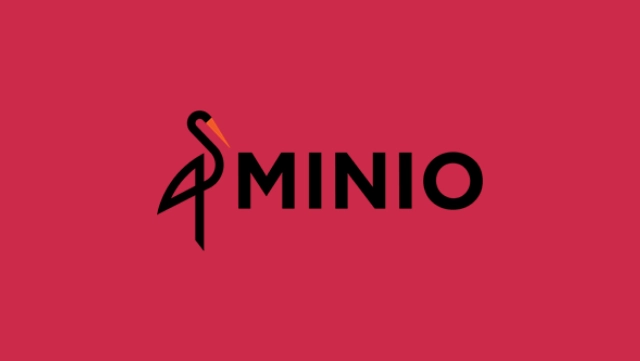
Source Fury: MinIO's Sudden Shift From Docker Threatens Cloud-Native Ecosystems
MinIO's abrupt decision to drop pre-built Docker images exposes dependency risks in cloud-native architectures while fueling debates about open source sustainability.
The object storage ecosystem faces an unexpected disruption as MinIO, the popular S3-compatible storage solution, quietly ends distribution of pre-built Docker images. What began as a routine security update request escalated into a revelation that threatens to upend deployment patterns across thousands of organizations.
The Docker Disappearance That Sparked Outrage
On October 18th, a user opened GitHub issue #21647 ↗ asking why security release RELEASE.2025-10-15T17-29-55Z lacked corresponding Docker images. The response from MinIO maintainers was blunt: “This project is a source only distribution now, if you want to build containers you need to build them yourselves.”
The timing couldn’t have been worse. The announcement coincided with a critical security update, leaving organizations stranded between vulnerability patching and suddenly needing to establish new build pipelines for what had previously been a simple docker pull minio/minio:latest operation.
“Wait… are you really giving up on your 1-billion+ downloads Minio Docker image?” asked one stunned developer in the GitHub discussion. “You most certainly have your own reasons, though I can’t understand why someone thought it would be beneficial for your company to abandon such a popular distribution.”
Broader Implications for Cloud-Native Infrastructure
This isn’t MinIO’s first controversial move toward commercialization. As Linuxiac reported ↗, “The change surfaced after users noticed missing Docker and Quay images, confirmed in a GitHub issue where MinIO maintainers stated that only ‘source-only distributions’ will be provided moving forward.”
The shift affects more than individual developers. Platforms like TrueNAS immediately faced downstream impacts, with their apps repository noting ↗ that “MinIO Community Edition is now source-only. This means binaries and docker images will need to built by users. Since the TrueNAS app appears to be using the official docker image (minio/minio), an alternative will need to be found to continue releasing updates.”
One paying customer captured the community’s frustration: “We are currently paying for a license while using the open source version, you already removed the oidc code from UI console and now docker images. We are not happy by this lock-in. We will discuss this internally, but you may loose a paying customer with this behavior.”
The Source-Only Movement: Control Versus Community
MinIO’s transition reflects a broader tension in open source business models. As one Hacker News contributor noted, “When MinIO is linked to a larger software stack in any form, including statically, dynamically, pipes, or containerized and invoked remotely, the AGPL v3 applies to your use. What triggers the AGPL v3 obligations is the exchanging data between the larger stack and MinIO.”
This aggressive licensing interpretation, combined with the source-only shift, positions MinIO as following what one developer called “the Elasticsearch playbook” - using open source as lead generation rather than community collaboration.
The impact extends beyond inconvenience. As another commenter observed on LowEndTalk: “Now there are a lot of MinIO instances that will be probably never updated, because no one will notice that on dl.min.io latest version is old version without security patch. This makes the internet less secure because MinIO systems in-place in many instances will not get updated, not only for the latest CVE but for future CVEs.”
Alternatives Emerge As Community Pushes Back
The development community isn’t taking this lying down. Coolify immediately stepped up with an automated build pipeline ↗, while others pointed toward established alternatives:
- GarageHQ: “A nice fork of the UI called OpenMaxIO exists. Garage for S3 emulation is a great tool.”
- RustFS: Early adopters report “Rust is very stable” despite its “do not use in production” warning
- SeaweedFS: Veterans recommend it for “smaller deployments where MinIO was previously adequate”
Interestingly, some enterprise users see silver linings. One infrastructure engineer commented: “While irritating, this forces proper supply chain security practices. If you’re relying on MinIO for business-critical storage, you should’ve had reproducible builds anyway.”
The Broader Pattern: When Open Source Turns Proprietary
MinIO joins Redis, Elastic, and other projects navigating the difficult transition from community project to sustainable business. The pattern typically involves:
- Removing convenient distribution methods (pre-built images)
- Restricting enterprise features behind paywalls
- Increasing license enforcement
- Ultimately shifting toward source-available rather than truly open models
As one developer lamented: “I think that after this issue… this project and its maintainers can no longer be trusted not to do another rug pull. Sad to see it all go, because I used it and frequently recommended it over the last 6 years.”
Navigating the New Reality
For organizations currently relying on MinIO, several paths forward exist:
Build Your Own Images: The Dockerfile remains available, requiring teams to establish CI/CD pipelines for MinIO builds.
Evaluate Alternatives: Projects like Garage offer similar functionality with more permissive licensing and community-focused development.
Accept the Commercial Reality: For enterprises with budget, MinIO’s enterprise offering provides features and support.
The fundamental question remains whether inconvenience serves as effective monetization strategy. As one infrastructure architect noted: “They’re essentially betting that the pain of building from source will push enough users toward paid subscriptions to justify alienating their community.”
The container ecosystem now watches closely - will MinIO’s gamble pay off, or will it become another cautionary tale in the challenging economics of open source sustainability? The answer may determine whether other projects follow similar paths or find more community-friendly monetization approaches.



